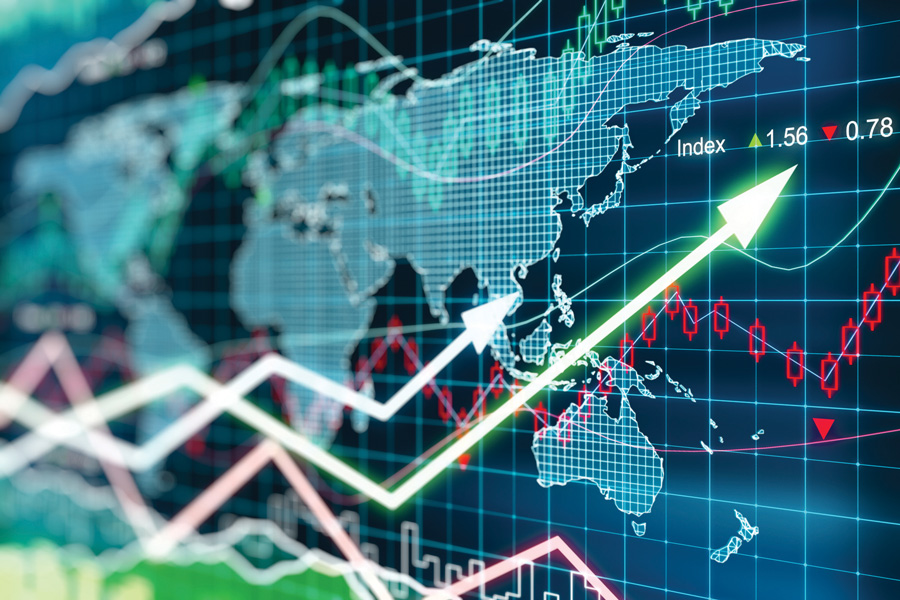

As investors scour the globe for undervalued stocks, one increasingly popular destination is actively managed exchange-traded funds that focus on emerging markets.
In the $348 billion market for ETFs that invest in developing-nation assets, the holdings of only about 5 percent of funds are actively managed — rather than pinned directly to an underlying index, according to data compiled by Bloomberg. But those actively managed funds have lured in more than a third of new cash that’s flowed into the asset class over the past year and more than 50 percent in the past month.
“If ever there was a compelling case for a more systematic approach to active management, it’s now,” said Donald Calcagni, chief investment officer of Mercer Advisors Investment Management and a buyer of active emerging-market ETFs. “Look at all the dislocations that are happening globally, at valuations, at how concentrated markets have become.”
The reasons for the shift toward emerging-market shares are plenty. Developing-nation stocks are trading at a discount of about 43 percent compared to their peers in the US, just shy of the biggest valuation gap on record, data compiled by Bloomberg show.
That chasm is a signal to some on Wall Street — including those with very few overseas investments — that developing nation stocks are undervalued, offering an ideal moment to load up on the assets.
Investors have been pouring cash into ETFs that wager on emerging assets in a bid to take advantage of lower fees and avoid the logistics of cross-border trading, reigniting the debate over whether active strategies can offer stronger returns versus passive ones beholden to a benchmark.
That momentum is reigniting the debate over whether investors can eke out stronger returns in nimble, active strategies compared to passive ones that are beholden to a benchmark.
Patrick Maynor, head of equities and portfolio manager at Trusted Capital Group, made his first foray into emerging-market funds by buying shares in the Avantis Emerging Markets Equity ETF (AVEM) in April 2023. The ETF has posted a total return of nearly 13 percent since then, beating its benchmark by 3 percentage points.
It was a decision that hinged on the potential for value hidden in developing equity markets. Not only do the stocks trade at far cheaper prices than mature-economy peers, he said, but they also offer a way to diversify his firm’s $7 billion of assets under management. Maynor currently targets an allocation of 15 percent of his global equity strategy portfolio to AVEM, with the ability to “tactically increase over time.”
“Knowing my limitations on EM investing, it makes sense to partner with someone who does have expertise in that area,” he said. “I just know how hard it is investing in that landscape, and it’s certainly an investment space where you do need to have that active-type management.”
More than 95 percent of cash destined for actively managed EM ETFs in the past year has gone into strategies managed by Avantis Investors, a $40 billion investment offering from global asset manager American Century Investments, and Dimensional Fund Advisors, according to Bloomberg-compiled data.
ETFs from Avantis and Dimensional have lower-than-average fees and track records of outperforming passive benchmarks — two sticking points for the critics of active management.
Product issuers like Avantis are taking note of this strong demand. Since the beginning of last year, about 27 new emerging-market ETFs have come to market in the US, and at least 18 of them are actively managed, according to Bloomberg-compiled data.
For example, AVEM — the largest fund by assets in the category — charges a fee of 33 basis points, less than half the industry average of about 70 basis points across US-listed active ETFs tracking developing nation assets, the data show. The strategy has returned more than 15 percent for investors in 2023, while its benchmark only returned 11.7 percent, according to performance data provided by Avantis.
The outperformance has come even as AVEM keeps about 19 percent of its assets in China, where equities have been plunging. While Dimensional’s active emerging-market offerings also have a significant exposure to China, the strategy offers more emphasis on smaller companies and value stocks, said Rob Harvey, Dimensional’s co-head of product specialists.
“Investors say they still want their portfolio to look like emerging markets, but want it done in a little bit of a better way that they can get in an index,” Harvey said.
Product issuers like Avantis are taking note of this strong investor demand, adding new offerings to their product lineups. The fund manager launched the actively managed Avantis Emerging Markets ex-China Equity ETF (AVXC) on March 21. Since the beginning of last year, about 27 new emerging-market ETFs have come to market in the US, and at least 18 of them are actively managed, according to Bloomberg-compiled data.
AVXC, in particular, is capitalizing on a popular theme in the passive space — emerging markets ex-China — as further evidence that investors want to make more targeted bets.
“The fear for an active manager is that if you get the China bet wrong, because it is such a big part of the EM index, there is a risk of ruin,” said Jane Edmondson, head of thematic strategy at TMX VettaFi. But also: “What if China rebounds?”

Relationships are key to our business but advisors are often slow to engage in specific activities designed to foster them.

Whichever path you go down, act now while you're still in control.

Pro-bitcoin professionals, however, say the cryptocurrency has ushered in change.

“LPL has evolved significantly over the last decade and still wants to scale up,” says one industry executive.

Survey findings from the Nationwide Retirement Institute offers pearls of planning wisdom from 60- to 65-year-olds, as well as insights into concerns.
Streamline your outreach with Aidentified's AI-driven solutions
This season’s market volatility: Positioning for rate relief, income growth and the AI rebound
